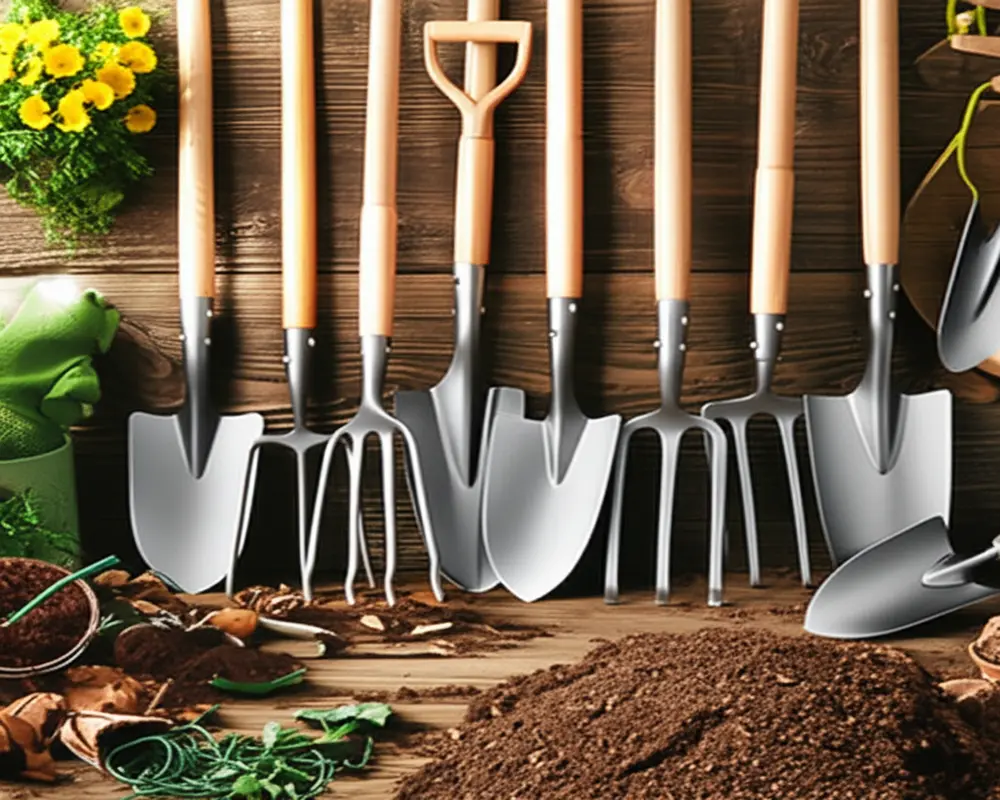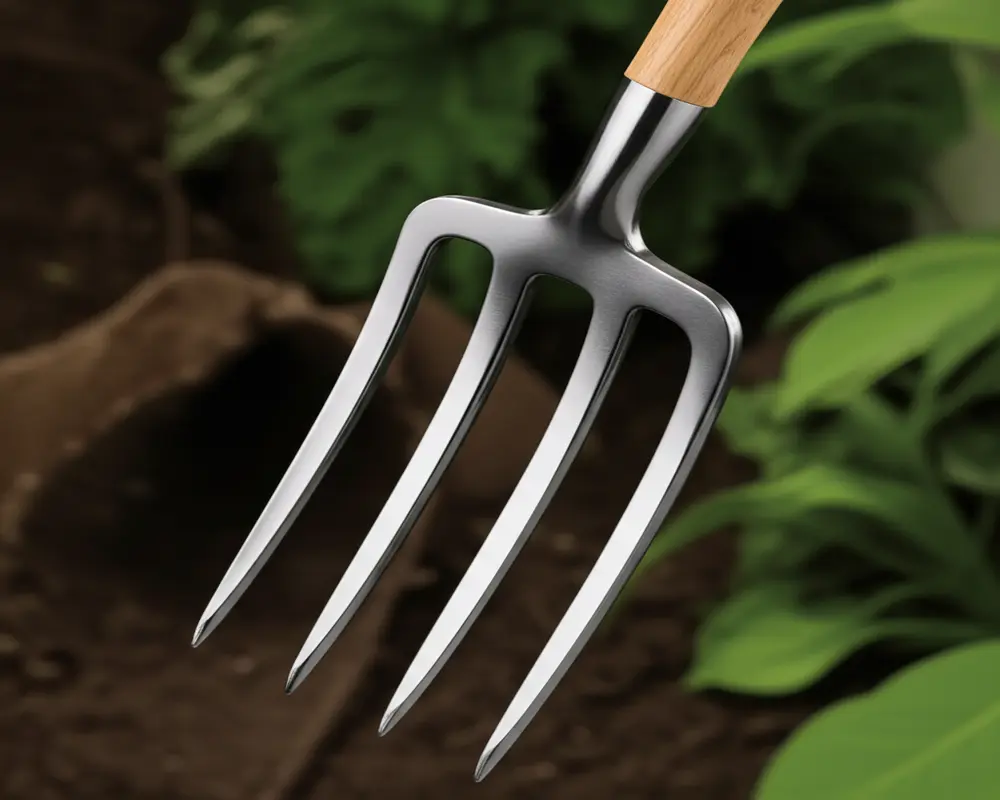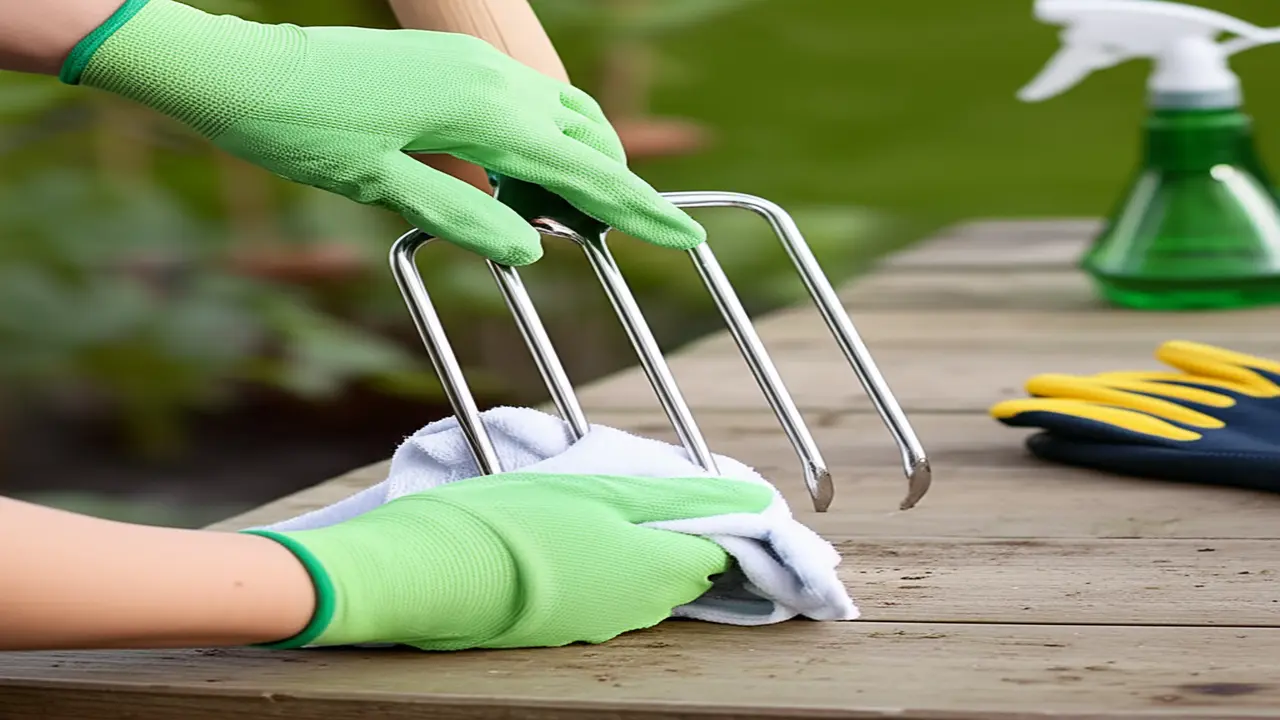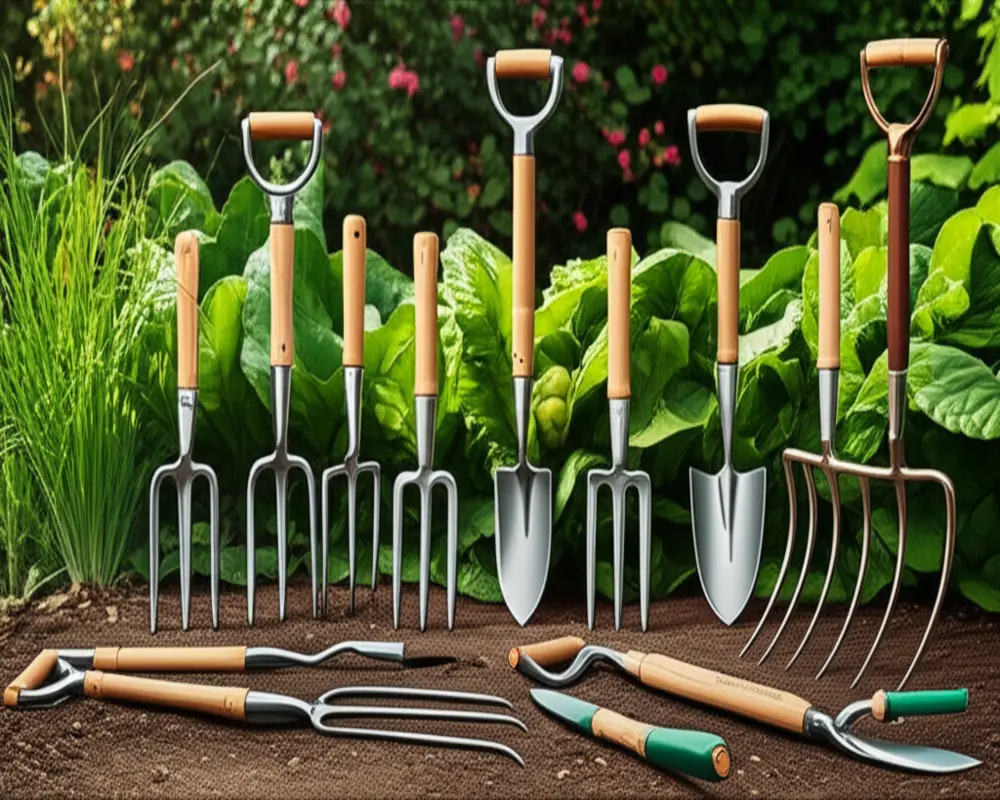Discover how to choose the perfect garden fork for your soil and gardening needs with our comprehensive 2025 buying guide.
I. Introduction: Why the Right Garden Fork Matters
Garden forks are often overlooked in favor of spades, but their role in cultivation is crucial. A proper garden fork enhances soil health by aerating the ground and easing the effort required for digging, turning compost, or harvesting. Choosing the right garden fork means investing in a tool that offers durability, efficiency, and comfort, leading to a more rewarding gardening experience and prolonged tool longevity.
II. Understanding Garden Fork Types & Uses
The variety of types of garden forks ensures there's a specialized tool for every gardening task. Knowing their distinct features will help you select the ideal one for your needs.
Digging Forks feature strong, curved tines made to break hard, compacted soil and turn compost effectively, perfect for heavy clay soils.

Border Forks have smaller, lighter tines designed for delicate work around raised beds and perennials, ensuring soil disturbance is minimal and precise.
Broadforks come with two handles and elongated tines, ideal for deep aeration in no-dig garden systems without disturbing the soil layers.
Pitchforks are used primarily for moving loose materials such as compost or mulch, equipped with long, curved tines tailored for lifting rather than digging.
Potato Forks contain blunt tines for gently harvesting root crops without damaging the produce.
Hand or Potting Forks are compact versions designed for container gardening and small-scale soil work.
III. Essential Features in a Quality Garden Fork
The material and construction of a garden fork significantly impact performance and durability. Understanding these garden fork features helps in making an informed purchase.
Tines made of carbon steel are robust but can rust; stainless steel offers rust resistance but may be lighter; boron steel balances strength and flexibility. The tine shape (flat vs. round), their count (usually 4-5), and length determine the fork’s soil penetration and versatility.

Handle materials vary from classic shock-absorbing ash wood, lightweight and durable fiberglass, to metal options such as steel or aluminum which provide strength but can be heavy. The design of handles – whether D-handle, T-handle, or long straight – contributes to ergonomics and grip comfort. Construction aspects including secure socket design and sturdy rivets or welds ensure overall tool balance and strength.
IV. Choosing the Right Garden Fork for You
Selecting the best garden fork requires evaluating your soil type and gardening activities. For example, digging forks excel in clay or dense soil, while broadforks suit aeration in softer soils. Consider your physical attributes like height and grip strength to select a tool that won’t cause strain during use.
Budget remains a practical factor; entry-level garden forks serve basic needs, whereas premium tools often feature superior materials and ergonomic designs promising longevity and comfort.
For specific gardening implements, check out detailed reviews such as our best garden spades guide which complements fork selections by presenting a broader toolkit perspective.
V. Top Garden Fork Brands & Their Advantages
Several industry leaders dominate garden fork manufacturing due to their commitment to quality and innovation:
- Spear & Jackson: Renowned for their durable forge tools.
- Sneeboer: Specialists in handcrafted steel forks.
- Fiskars: Known for ergonomic designs and lightweight materials.
- DeWit: Crafts traditional style forks with modern features.
- Truper: Offers budget-friendly durable options.
- Corona: Blends quality and innovation for efficient gardening tools.
These brands often innovate with sustainability in mind, integrating recycled materials and ergonomic enhancements. User reviews praise their performance and longevity, making them reliable choices for serious gardeners.
VI. Garden Fork Maintenance for Longevity
Proper care can greatly extend your garden fork’s service life. Cleaning the tool after each use removes soil and debris, preventing deterioration. Applying oil on metal parts helps prevent rust, while storing the fork in a dry place maintains its condition.

Handle care, including sanding rough patches and oiling wooden handles, protects against splintering. Maintaining the sharpness of tines by occasional sharpening keeps the fork efficient and easier to use.
VII. Safety Tips
Regular inspection of your garden fork before use detects any damage that could lead to accidents. Employing correct posture and proper handling techniques reduces strain and injury risk. Be aware of your surroundings and wear suitable footwear to protect your feet during gardening activities.
VIII. FAQs
Q: What is the difference between a digging fork and a pitchfork?
A: Digging forks have short, strong tines ideal for breaking soil, while pitchforks have longer, curved tines for moving loose materials like compost.Q: Can I use a garden fork in rocky soil?
A: Yes, but opt for a fork with strong, durable tines like those made from boron or carbon steel to withstand impacts.Q: How long does a garden fork typically last?
A: With proper maintenance, a high-quality garden fork can last several years or even decades.Q: Which is better, stainless steel or carbon steel tines?
A: Stainless steel offers rust resistance, making it low maintenance, while carbon steel is stronger but requires more care to prevent rust.Q: What handle type is best for heavy digging?
A: A long straight handle or a D-handle with proper padding provides good leverage and control for heavy-duty tasks.
IX. Conclusion: Invest in the Right Garden Fork for Rewarding Gardening
Choosing the right garden fork means evaluating Garden Fork Buying Guide, material quality, and ergonomic features to suit your unique gardening needs. From soil type to budget considerations, investing in a quality tool pays off through improved soil health, reduced effort, and years of dependable use.
Remember, quality matters more than price alone. Consider brands with a track record for durability and innovation, and commit to regular fork maintenance to maximize your return on investment.
Now is the perfect time to make an informed purchase that will enhance your gardening success. Browse trusted sources such as the Royal Horticultural Society and Gardening Know How to deepen your understanding and complement this guide.
Equip yourself wisely, and enjoy the fruits of your well-prepared soil!

